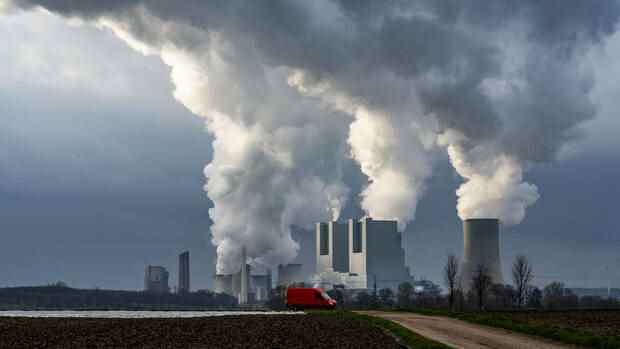Systems of the so-called security stand-by are available for a limited time as the “last reserve”.
(Photo: imago images/Jochen Tack)
Berlin Economics Minister Robert Habeck (Greens) plays it safe. In view of the Russian attack on Ukraine, it must be ensured that coal-fired power plants are available as a back-up, according to a ministry paper published on Thursday afternoon. It refers to lignite-fired power plants from the so-called security reserve.
“Power plants on security standby are on cold reserve, so they are shut down, but they can be activated if necessary. There are 1.9 gigawatts (GW) of lignite-fired power plants on standby,” the paper continues.
One examines “whether and to what extent power plants due to be shut down can be transferred to a temporary reserve so that they are available in an emergency”. The security stand-by is limited in time. The aim is to “reduce gas consumption and be able to ensure security of supply in the coming winter”.
Habeck had repeatedly emphasized recently that he was sticking to the traffic light coalition’s goal of bringing forward the phase-out of coal from 2038 to 2030 if possible. On the way there, however, he seems willing to make compromises.
Top jobs of the day
Find the best jobs now and
be notified by email.
The initiative is part of a whole series of measures designed to help increase security of supply. The focus of the efforts is the expansion of renewable energies and the ramp-up of a hydrogen value chain. The measures also include a new regulation for filling gas storage facilities, the federal government’s participation in the construction of a liquid gas terminal and the creation of a national hard coal reserve.
Lignite power is harmful to the climate, but can serve as an important reserve
Although lignite-fired power generation is particularly harmful to the climate, many experts recommend not shutting down lignite-fired power plants as planned in view of the threat of supply bottlenecks. In a recent interview with the Handelsblatt, Ottmar Edenhofer, director of the Potsdam Institute for Climate Impact Research (PIK), recommended using lignite-fired power plants. Edenhofer spoke of an “emergency situation”.
An RWE spokesman said: “It is the need of the hour for politicians to consider the whole spectrum of measures that can reduce our dependence on raw material imports from Russia. One possibility can be to use coal-fired power plants that are in reserve or on standby again.” It can also be checked whether plants that have already been shut down could be brought back to the grid.
Postponing shutdowns due this year would be another way to help the system. “We are examining this for our lignite-fired power plants so that we are able to act if the federal government deems such measures necessary,” the RWE spokesman continued.
The security stand-by are lignite-fired power plants that are held as a “last resort” in the event that electricity production is insufficient to cover consumption. If requested by the transmission system operator, the systems must be ready for operation within ten days. It must then be possible to start them up to “minimum partial output” within eleven hours and to their “net rated output” within a further 13 hours.
However, according to current law, the power plants are only available for four years at a time. The first of a total of eight lignite-fired power plant blocks on the security stand-by went online in October 2016 for four years and has thus already been removed from the security stand-by.
Lignite-fired power plants with an output of 1.9 gigawatts (GW) are currently on standby. The last two of the eight blocks – Neurath from RWE and Jänschwalde from LEAG – went on standby on October 1, 2019 and would therefore go offline on October 1, 2023 as planned. This end date could now possibly be postponed.
Network operators have to balance supply and demand
In order to ensure that sufficient secured power plant capacity is available in as many bottleneck situations as possible, the legislator has already developed a large number of safeguarding instruments in recent years. Security preparedness is one of those tools. This also includes, for example, the capacity reserve and the grid reserve.
The transmission system operators access the capacity reserve if there is not enough supply on the wholesale market to cover the entire demand. For this purpose, existing generation plants, storage facilities or loads are kept outside the electricity market and used if necessary on the instructions of the transmission system operator. An output of 1.06 GW is currently available in the capacity reserve.
The grid reserve, in turn, is made up of system-relevant domestic power plants that should be shut down temporarily or permanently by the operators. Foreign power plants can also be used for the grid reserve. The grid reserve is formed every year in the winter half-year in order to reserve power plant capacities for interventions by the transmission system operators.
The reason for this is that the demand for electricity is usually particularly high in winter, while a lot of electricity is being produced in the wind farms in northern Germany. Due to grid bottlenecks on the way from the north to the south, the transmission system operators often have to shut down power plants in the north and start up plants in the south with the same output (“redispatch”) in order to relieve the power grid and fully meet the demand. For the winter of 2021/2022, the grid reserve has a capacity of 5.67 GW.
More: How the industry wants to reduce gas consumption
